
October 9, 2024 | 11:36 am
Table of Contents
Building a financial model might seem daunting, especially for non-finance entrepreneurs.
However, it is a crucial tool for SMEs and startups to help them understand their financial
situation, anticipate challenges, and identify opportunities.
Financial modeling is a tool that businesses use to forecast future financial performance.
To build a financial model, key assumptions and historical financial data are used to create
scenarios to assess the potential impact of different strategies.
Explore the various ways a financial model can benefit your business. This guide will walk
you through the steps and considerations you should know when building one.
What are the benefits of building a financial model?
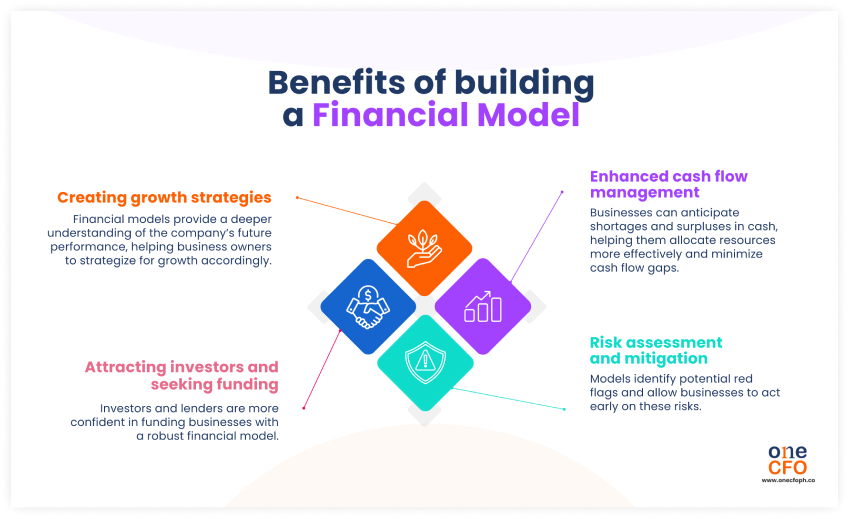
Financial modeling isn’t just for large corporations;
it’s also a beneficial tool for SMEs
and startups!
Here are the importance of building a financial model for businesses:
Creating growth strategies
Financial models are a business’s foundation for creating growth strategies. They help
entrepreneurs visualize and understand various business scenarios, such as scaling
operations or changing customer demands, and strategize accordingly.
When building financial models, finance experts test different variables, like sales volume
or price per unit, and create projections crucial for strategizing. Foresight into future
cash flow, profitability, and expenses allows businesses to identify which strategies will
lead to sustainable growth.
Moreover, financial models make tracking progress toward growth targets easier by comparing
your actual data with the model’s projections. Knowing how far or near the actual
performance is from the projection can guide businesses in deciding whether to refine their
strategies or keep the course.
Enhanced cash flow management
Businesses can also build financial models to enhance their cash flow management. With a cash flow model, companies can
anticipate potential cash shortages or surpluses that impact
business operations.
Knowing when you’re approaching a cash dip allows you to be more proactive and avoid any
last-minute borrowing of money. Similarly, anticipating extra cash lets you allocate your
resources more effectively, whether through reinvestment in the business or paying down
existing debts.
Financial models are also valuable when optimizing the timing of your suppliers' payments
and collecting customer receivables. Aligning your inflows and outflows minimizes the risk
of shortages and ensures you can always cover your business obligations.
Attracting investors and securing funding
A robust and well-constructed financial model is essential for attracting investors,
particularly for startups looking for angel investors or venture capitalists.
The first thing investors look for when considering your business is your plan for growth
and profitability, which you can effectively showcase with a financial model.
In addition, a proper financial model instills more confidence in investors. It demonstrates
your deep understanding of the business and shows that you have comprehensive plans to
achieve the company’s goals.
Even SMEs can benefit from financial models when identifying the best type of funding to
target. Financial models project a company’s financial position by factoring in interest
expenses and loan repayment schedules, also known as debt schedules.
Using a debt schedule, the model can show how the company’s debts impact its cash flow and
profitability. This also allows entrepreneurs and lenders to evaluate if the business can
take on additional debt.
Risk assessment and mitigation
Risks are an inherent part of the business world. You can’t have a business without taking
risks! The key to being a successful entrepreneur is knowing how to navigate and mitigate
these risks.
Financial models aid businesses in risk management by helping them prepare for different
outcomes, including worst-case scenarios. Through scenario planning, businesses can simulate
scenarios like market downturns or cash flow shortages and see what
risks these situations
pose and how they impact the business’s finances.
Being proactive in identifying risks allows you to create contingency plans or strategies to
minimize or eliminate these risks.
In addition to scenario planning, financial models' revenue and expense projections act as
early warning systems for your financial performance. By continuously updating your
financial model, you can detect potential shifts in your cash flow or profitability and take
action if necessary.
What are the essential components of a financial model?
A financial model is a tool that simulates or forecasts the company’s financial position
based on various conditions.
To create an accurate and effective financial model, SMEs and startups need to include these
essential components:
Historical Data
One of the main components and foundation of a financial model is historical data.
Historical data gives business owners valuable insights into trends or patterns and helps
them understand what has worked and what hasn’t.
Reliable historical data also ensures that your assumptions are grounded in reality, making
your model more accurate.
Key Assumptions
All financial models require creating assumptions that serve as input variables for your
model. Assumptions are educated estimates of future financial metrics like COGS, operating
expenses, capital expenditure, revenue, etc.
Key assumptions should be realistic and well-researched to create accurate forecasts of your
financial statements. This way, business owners can make more informed decisions using their
model's projections.
Financial Statements
Three financial statements are the cornerstone of financial modeling, providing comprehensive information on a company’s financial health. It consists of:
These three financial statements should be interconnected to provide a holistic view of a
company’s financial performance. Changes in one statement will impact the others.
By projecting future financial statements, one can anticipate potential challenges and
opportunities. This allows you to make proactive decisions and develop contingency plans.
Investors also use this three-statement model to evaluate a company's investment potential.
Supporting Schedules
In addition to the core financial statements, supporting schedules show more detailed
calculations for depreciation, working capital, and debt.
Supporting schedules help provide more clarity by breaking down the elements that influence
your projections. For example, a debt schedule outlines the specifics of your debts, which
helps in projecting how debts impact your cash flow over time.
How to build a financial model?
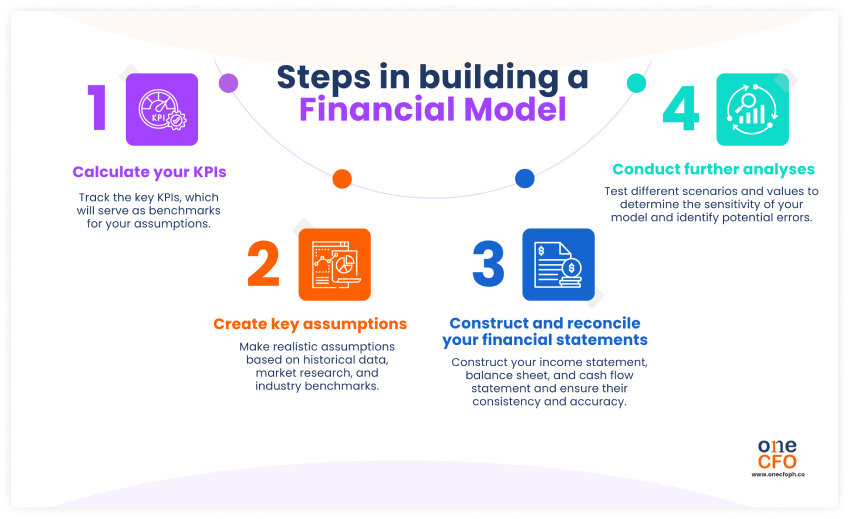
With proper guidance and understanding, SMEs and startups can start to build a financial model with these simple steps:
Step 1: Calculate your KPIs
The first step in building a financial model is identifying the key performance indicators
(KPIs) you want to track when assessing the business’s financial health.
For example, if your focus is improving your cash flow, calculating cash flow KPIs like
quick ratio, cash conversion cycle, or free cash flow will be beneficial.
Your KPIs serve as benchmarks for your financial performance. Tracking them helps you better
understand how they evolve so you can make more realistic assumptions about your future
financial health.
Step 2: Create your assumptions
Make your assumptions as realistic as possible by relying on historical data, market
research, or industry benchmarks.
For example, a small clothing shop can use assumptions like monthly sales growth and
inventory turnover rate, which is how quickly the shop sells through its inventory. If the
sales go above a certain level, the model might show that the business should order more
stock or introduce new products.
Documenting your key assumptions is also essential so you can easily adjust them when needed
or when more information becomes available.
Step 3: Construct and reconcile your financial statements
The next step is constructing your forecast period’s financial statements: income statement, balance sheet, and cash flow statement. When forecasting these statements, you can choose between these two methods:
If your business or startup has been operating for some time, use your historical financial
data to create these statements.
For early-stage businesses that don’t have financial statements yet, you can rely on market
research and assumptions when constructing your reports.
For businesses that have fallen behind on financial report preparation, you may want to
consider hiring experts to help you get back on track and ensure your financial data are
up-to-date.
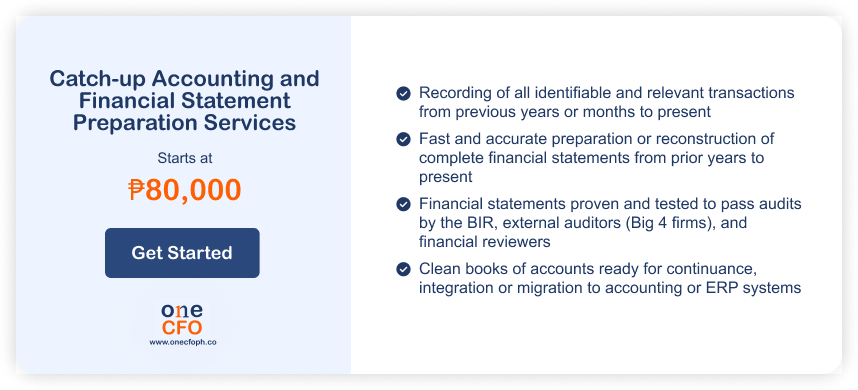
Once your financial statements are ready, you should also ensure they’re consistent and
interconnected.
For example, the net income in the income statement should be reflected in the equity
portion of the balance sheet, as well as the operating activities in your cash flow
statement. It’s best to use formulas or software tools to check for
discrepancies and adjust
when needed.
Step 4: Conduct further analyses
Now that the model is almost set up, start analyzing it by testing different scenarios and
stress testing it accordingly.
Conduct a sensitivity analysis to determine
how changes in key inputs and assumptions affect
your financial performance. This test shows how sensitive your model is to variable changes
and which have the most significant influence on your projections.
Similarly, stress test your model to ensure that errors will not occur as the business
continuously updates it.
Stress tests push the model to the
limits by testing all possible values, such as increasing
or decreasing them significantly or even setting them to zero, to see how the model
responds. The goal is to identify potential errors that could affect its performance.
Financial modeling tips for SMEs and startups
Are you ready to build your financial model? Here are some helpful tips to get started:
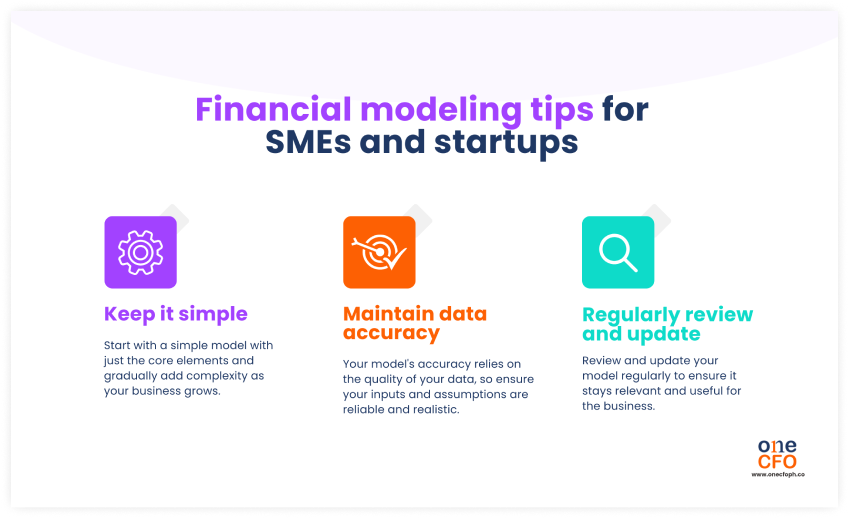
Keep it simple
The first rule of thumb in building financial models is to keep them simple. Start by
creating a basic model with essential elements, such as revenue, expenses, and cash flow.
In the example, you can simply create your assumptions on how many units you’ll sell, the
pricing, unit cost, and your operating expenses. From these assumptions, you can then create
a model projecting your operating income.
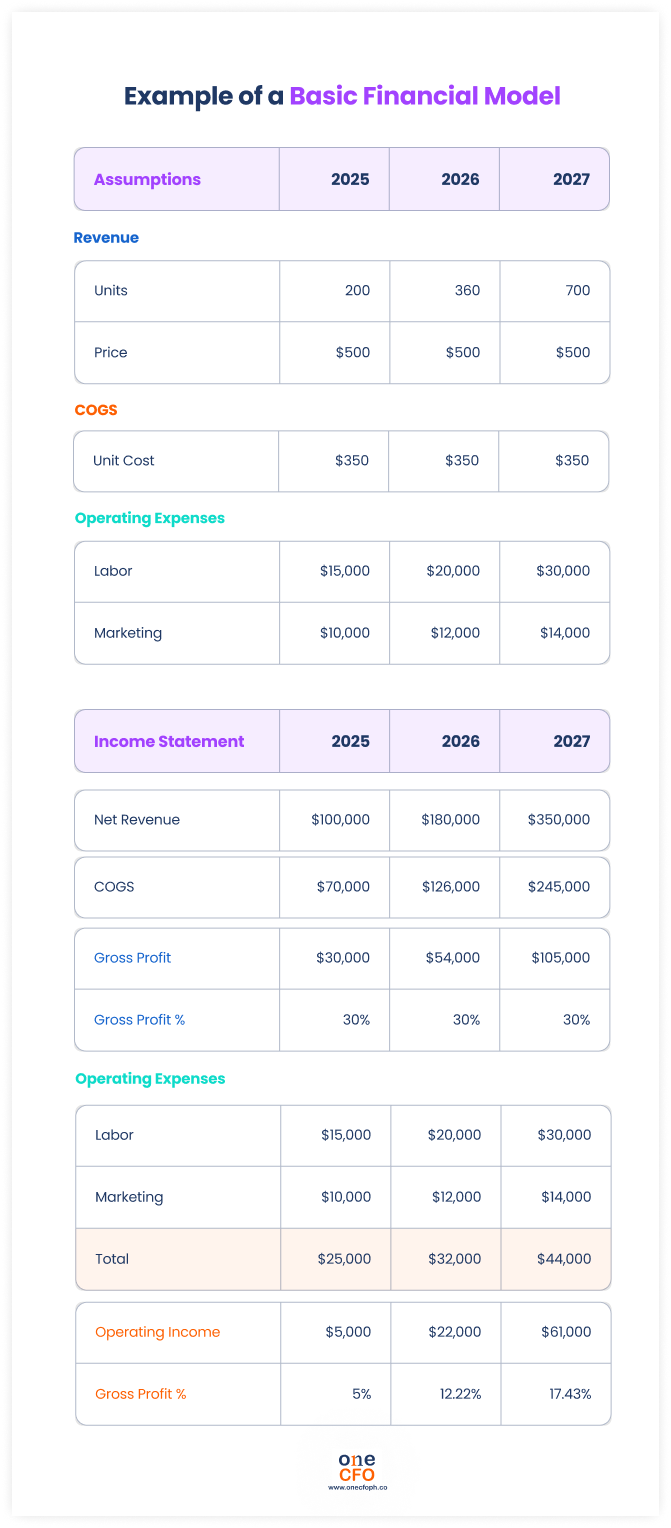
A simple financial model is easier to maintain and prevents business owners and finance
teams from being overwhelmed.
As your business needs grow, you can add complexity to your financial model by introducing
more layers and variables.
Maintain data accuracy
Financial models follow the principle “Garbage in, garbage out,” which essentially means
that your model is only as good as the data or inputs used to make it.
Business owners and founders must ensure the accuracy of the financial data fed to the
model. If available, use reliable historical data or ensure your assumptions are realistic.
The more accurate your financial model is, the more valuable it becomes in helping
businesses make informed decisions.
Financial data accuracy starts with proper bookkeeping. Watch this video to learn
bookkeeping best practices:
Regularly review and update
Building a model isn’t a one-time task. After creating it, you should consistently maintain
it through regular reviews and updates.
Furthermore, business and market conditions are rapidly changing, so it's important to
adjust your model and assumptions to reflect these changes. It’s also essential to use your
latest data, such as sales figures, expense reports, and more, to update your model.
A good practice is to review your model and update it monthly or quarterly to maintain
awareness and foresight into your business's long-term direction.
Partner with a fractional CFO for expert financial modeling
Financial modeling is a powerful tool that helps SMEs and startups create growth strategies,
manage their cash flow, fundraise, and mitigate risks.
However, to fully maximize the advantages of a financial model, you’ll need the knowledge
and experience to build it around your business's specifics.
Also, as your business evolves, so do your financial modeling needs. Creating complex models
to address specific challenges can be time-consuming and require expertise.
That’s why partnering with a fractional CFO at OneCFO can be a
game-changer for SMEs and
startups. Running a business or startup is already a handful, so delegating financial
modeling tasks to an expert ensures they are done accurately and correctly.
As your growth partner, OneCFO can take your financial modeling worries off your shoulders
and ensure you can focus on growing your business.
Visit us at onecfoph.co or email us at [email protected] to
discover how our CFO services for small businesses can empower you to make the right
decisions and implement strategies to boost profitability.
Read our disclaimer here.